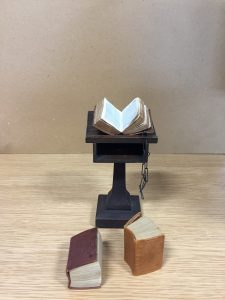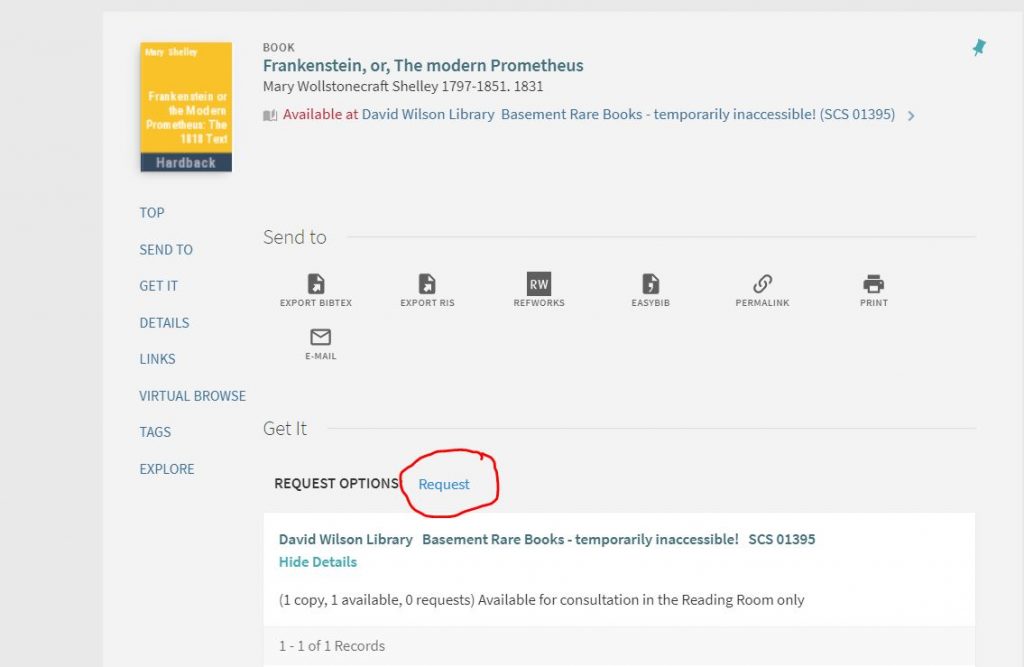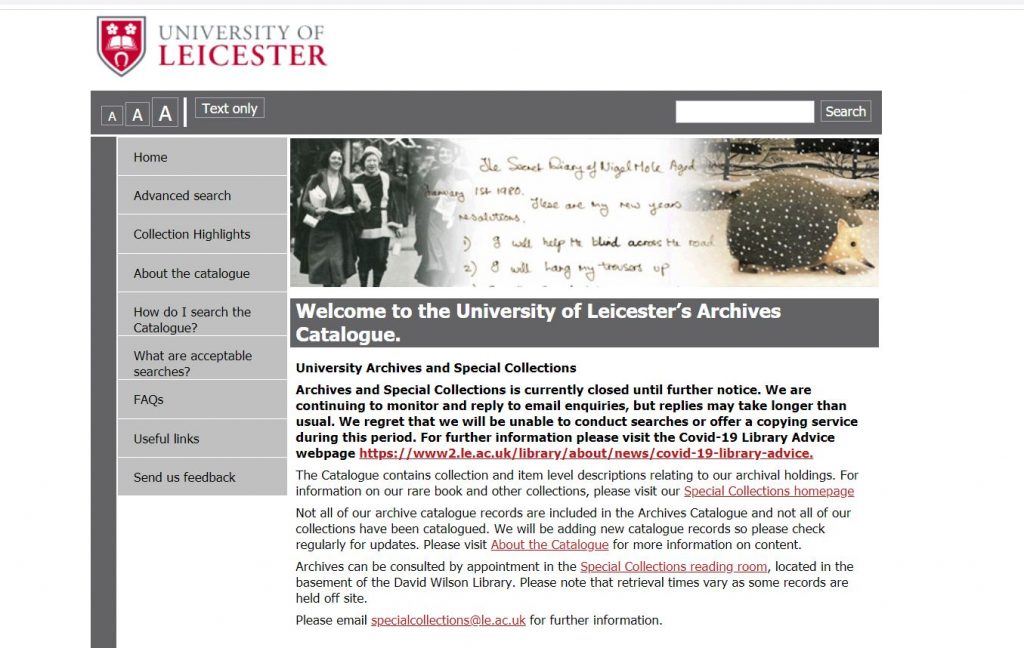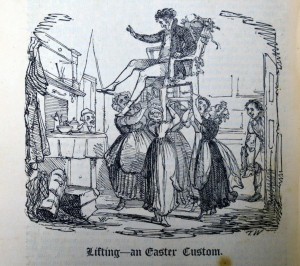Although we can’t meet physically, the Archives & Special Collections team have enjoyed catching up virtually in our new work stations. There have been some staff changes over the past couple of years so here are few of us in action!
Our main function may be to preserve, manage, and make accessible the University’s archives and special collections, however we also have three other projects incorporated into Archives & Special Collections.
We have two ongoing projects funded by the National Lottery Heritage Fund (NLHF):
Archives & Special Collections are also collaborating with the School of History, Politics and International Relations to conduct research into the history of the University, through the University History Project which is led by Elizabeth Blood (Research Associate).
More information on these exciting projects in the coming weeks!
So, how did you get on with browsing Special Collections Online, introduced last week?
This second post will focus on how we manage our collections and how their catalogues can be used to locate archives. Catalogues are a great way of improving the discoverability of collections.
Where to start?
Our archive store and external storage facility holds 1000s of rare book

s and archives. These can vary, from incredibly large volumes such as John Gouds’s ‘The Birds of Great Britain’ to miniature items such as these Victorian bibles (right) measuring just 5cm!
To search for our rare books, you can simply use the Library catalogue. Books from Special Collections are reference only, so can only be viewed in our reading room with an appointment made in advance. Once you’ve found your chosen title on the catalogue click ‘Request’ (making sure you’re signed in) and follow the drop down list to complete the request. Once your book has been retrieved from our store we’ll send you an email to arrange to a time to view it!
Archives are catalogued differently to books, so have their own catalogue. Archive catalogues use a hierarchical structure, which takes you from a broad overview of the contents of a collection, down to a more detailed description of an individual item or file. It can take a while to get to grips with how archive collections are catalogued. I recommend reading these series of blogs posts, which answer the questions: ‘How do Archivists organise collections?’ and ‘How do Archivists describe collections? (Or, How to read a finding aid)’.
Each year the team runs ‘Introduction to Archives’ classes as part of the MA History, English and Museum Studies programmes, plus offer workshops and webinars on ‘Introduction to Archives & Modern Records’ for PhD students. We are always happy to run further sessions on this topic, either as a group or 1-to-1 so do get in touch via: specialcollections@le.ac.uk!
Describing collections is time consuming and resource intensive, and it is very unusual for an archive service (big or small) to have catalogued their entire holdings. Much material remains either in ‘draft’ form on the catalogue, appears as an ad hoc box list (literally a list of items in a box), while some collections will sit on a shelf for years before an Archivist can add their contents onto the catalogue!
Does this mean I won’t be able to find what I want? 🙁
Not necessarily! When material is deposited with an archive, it is assigned an accession number and a descriptive entry is made to summarise the contents of the deposit. It is always worth getting in touch with the Archivist if you can’t find an item or file on the catalogue as they may have the information elsewhere!
Ok, so I’m starting to digress…back to what University of Leicester has to offer!
An A-Z of our collections is available here. This provides an overview of the collections we hold (Note: new collections are deposited regularly so this is in no way a definitive list!). If you prefer browsing thematically, then searching ‘Collections by theme’ groups together collections which share the same topic or subject matter.
For information about what the University Archives (records relating to the institution) contains, this is a good starting point: https://www2.le.ac.uk/library/find/specialcollections/universityarchives
After this you should head to our archive catalogue and search in the ‘Doc Ref’ field for ‘ULA’ (this is the reference for the collection) which will bring up records in the University Archives.
Top tip! Use the tiny + symbol to expand the levels of the catalogue tree. You can also browse our help pages for guidance on navigating the catalogue.
Use info:
We aim to catalogue everything to a useful level of detail but, for example, every name or event recorded in a minute book is not indexed, so you may need to think about the records which hold the kind of information that you are looking for, and search for the series of records instead of individual names. Not all of the material is catalogued or published onto our online catalogue so if you are having trouble finding something, please ask us.
That’s all for part 2 of ‘Keep Calm and Scroll On!’, for updates on our services and projects look out for Part 3 coming after Easter!
Talking of Easter, why not learn about the 18/19th century custom of






 Subscribe to Sarah Wood's posts
Subscribe to Sarah Wood's posts
Recent Comments